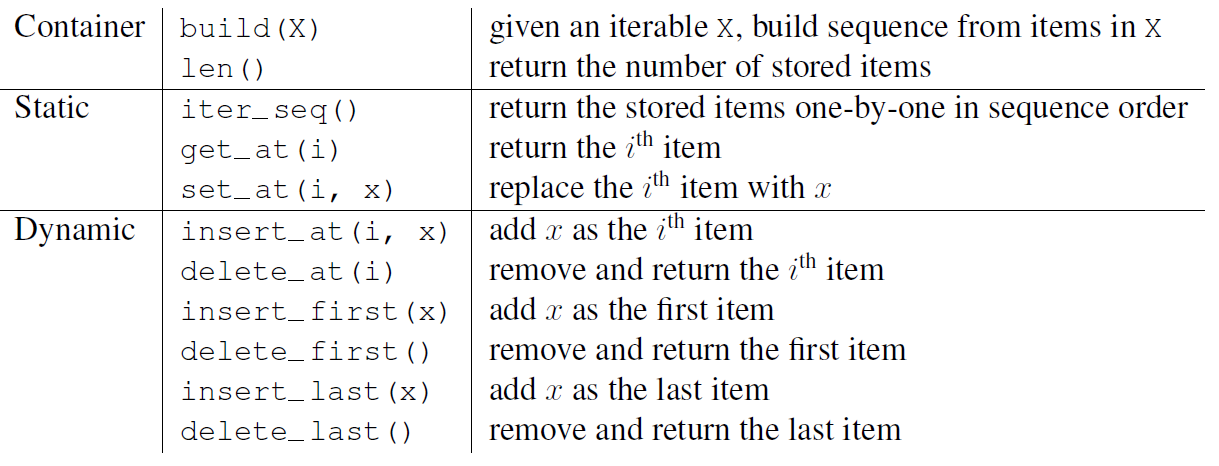[Lecture Summary] 01 Algorithm and Data Structure : Sequence Interface
This contents is based on Lecture of link
API
Operations
Sequence Interface should support following operations
Properites
- Surely, performance will be different based on implemenation(or algorithm).
- In the case of build() or Container, it takes time proportional to tie space or size
- This is about memory allocation model.
- Static Operations take constant time!
Data Structure
(Static) Array Sequence
=> consecutive chunck of momory
=> array[i] = memory[address(array)+i]
= memory[id(array)+i] @ Python
Properties
- Size is constant!!
- Great at static operation: $O(1)$
- Poor at dynamic operations: $O(n)$
- reallocating the array
- shifting all items
- Insert_at , delete_at : $\theta(n)$
Dynamic Array Sequence
= list @ Python
For empty array, it resize every 1, 2, 4, 8, … $\log(n)$. This means that allocating every item at an empty dynamic array is $O(1+2+…+\log(n))$ which is domiated by last term!.Therefore, allocating whole items on empty array $\theta(2^{\log(n)})=\theta(n)$.
Then, allocating a single item on array is on average $\theta(1)$ amortized time! (You can see amortize analysis). That’s why insert/delete_last is 1 for the above table.
(This is just the case of list @ Python. append and pop are amortized $O(1)$ time but any other operation takes $O(n)$)
Properties
- relax constraint on size
- enforce size = $\theta(n) \ge n$
- Allocate new array of $2\times size$
- size = size of the array
- len = length of item
Linked List Sequence
Concept of Point arise!
Every node : an item and a pointer to the next node
Properties
- insert/delete_first: $\theta(1)$
- get/set_at : $\theta(i)$
- in the worst case, $\theta(n)$


댓글남기기